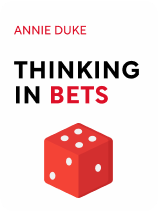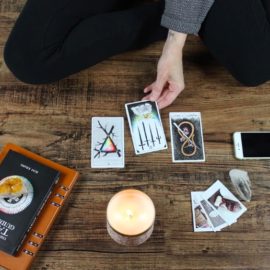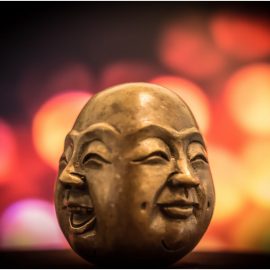

This article is an excerpt from the Shortform book guide to "Thinking in Bets" by Annie Duke. Shortform has the world's best summaries and analyses of books you should be reading.
Like this article? Sign up for a free trial here .
Do you rate your decisions based solely on the outcomes? Have you developed a rational decision-making process?
Thinking in Bets author Annie Duke believes that we must judge the soundness of our decisions, not just by their results, but by the reasoning we use to make them. Ultimately, a rational decision-making process should be our goal.
Read more to learn what constitutes a rational decision-making process.
What Is a Rational Decision-Making Process?
Now we’ll examine what a rational decision-making process looks like, and how you can reframe your usual ways of thinking about the process. The goal is to create a mindset that moves away from absolutes and toward intellectual flexibility, objectivity, and rationality. We’ll cover the need to judge our decisions based on our reasoning and not just the results we achieved.
Separating Process From Outcomes
Before you can get better at making decisions, you have to get better at learning from the decisions you’ve made in the past. The key to that is making sure that you’re actually learning from the decisions themselves, and not thinking solely in terms of results or outcomes. More than simply striving to make rational decisions, we should aim to develop a rational decision-making process.
What Is “Resulting”?
“Resulting” is a poker term that refers to our habit of judging a decision based solely on the outcome it produced. It’s dangerous because it can lead you to believe you have to change your decision strategy based on one bad outcome. What if the bad outcome was due to luck, rather than the quality of your decision? In that case, changing your approach won’t help in the long run; it’ll just make you confused and erratic.
Making good decisions isn’t just about achieving the best outcome: It’s about having a rational decision-making process—one that is sound regardless of what the final outcome is.
For example, imagine that you have an appointment coming up. It’s raining and you guess that traffic will be slower, so you leave early. But an accident on the highway, caused by the slippery roads, leads to a traffic jam; you get stuck there for an hour and miss your appointment. While you’re waiting, the storm clears up. You realize that if you hadn’t bothered leaving early, you’d have missed the storm altogether. Or if you’d left even earlier, you might not have gotten stuck behind the accident.
But that doesn’t mean you made a bad decision. You paid attention to conditions on the road, predicted that the commute would take you longer, and took action to avoid being late. You didn’t know there would be an accident or that the weather would clear up soon, and you can’t make a decision based on information you don’t have. In general, leaving early to make your appointments is probably a practice that will serve you well, and not something you should abandon because of one bad outcome.
Before you blame a negative outcome on poor decision-making, analyze the factors that led you to make the choice you made. You can’t control your luck, but you can control your skill and the soundness of your thought process. You can make sure that you considered alternatives, took steps to lower your risk, and thought through all the possible outcomes.
Being a good decision-maker means staying rational in the face of losses, because some losses are inevitable. You won’t always be right, but you can always be working toward objectivity and away from emotional or biased decision-making.
Consider the reverse: bad decisions that lead to positive outcomes. Picture a college student deciding to skip an early morning class, only to belatedly remember that they have an exam that day. They race to the lecture hall, rehearsing excuses the whole way there—and find it empty. After quickly checking their email, they find out that class has been unexpectedly canceled and the exam delayed. The outcome was good, but their decision to skip class was still bad.
If we can separate positive outcomes from negative decisions, we should be able to do the same with negative outcomes that result from what could have been good decisions. Avoid falling into the trap of “hindsight bias”—which is how, once we’ve learned the outcome of a decision, we’re prone to thinking it was obvious and we should’ve predicted it beforehand. It only seems obvious because, as the saying goes, “hindsight is 20/20.” But in the moment, things are never that simple.
(Shortform note: To learn more about how to avoid hindsight bias, read our guide to Thinking, Fast and Slow.)
Ultimately, we must develop a rational decision-making process and look beyond the outcomes of our decisions.

———End of Preview———
Like what you just read? Read the rest of the world's best book summary and analysis of Annie Duke's "Thinking in Bets" at Shortform .
Here's what you'll find in our full Thinking in Bets summary :
- How to get better at making good decisions
- How to work around your biases
- How to evaluate and learn from your past






